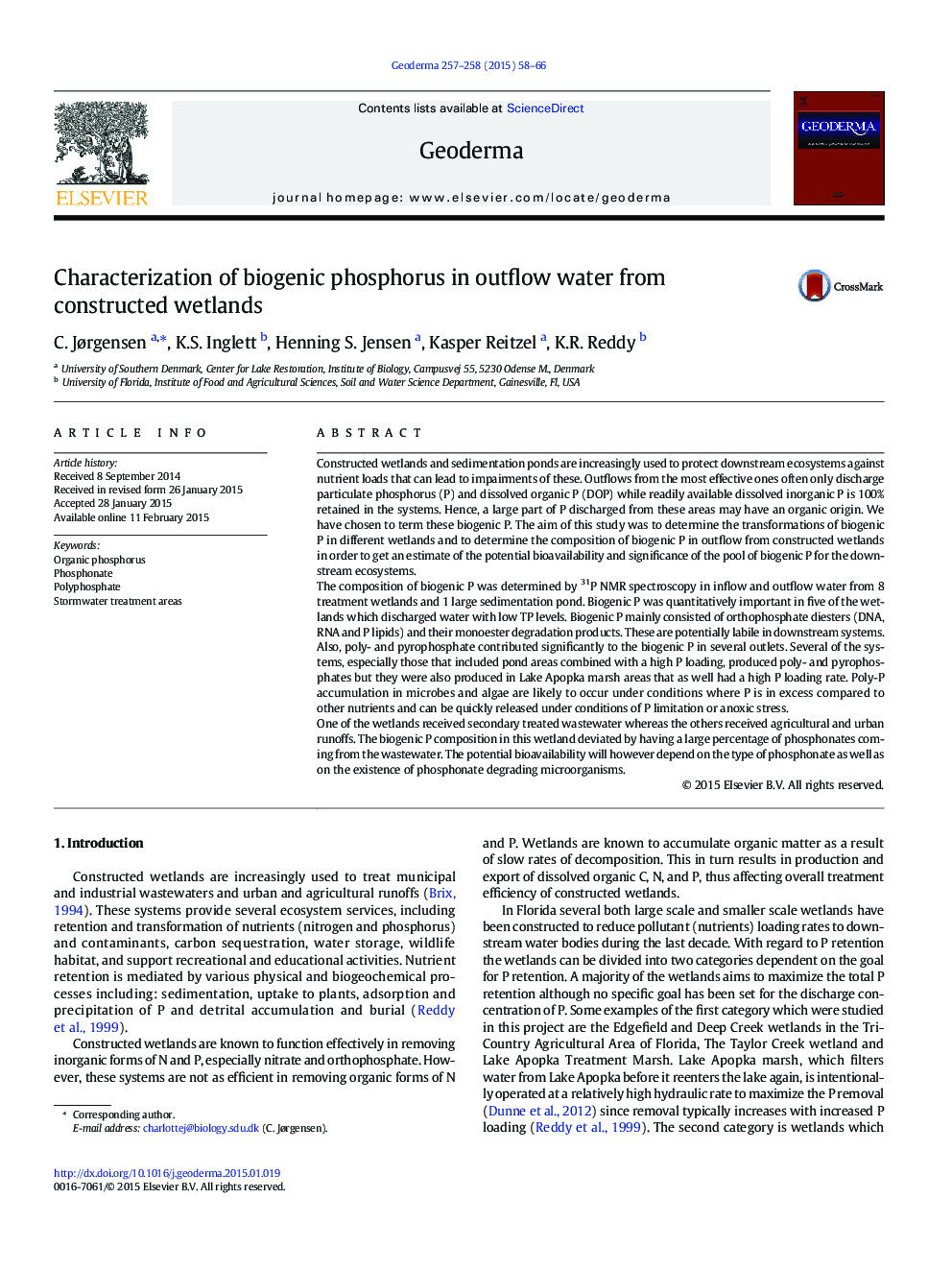| کد مقاله | کد نشریه | سال انتشار | مقاله انگلیسی | نسخه تمام متن |
|---|---|---|---|---|
| 4573128 | 1629457 | 2015 | 9 صفحه PDF | دانلود رایگان |
• Biogenic P contributed 27 ± 19% of total P in the outflow from 9 constructed wetlands.
• Orthophosphate diesters and their degradation products were the dominating forms.
• Poly- and pyrophosphate enrichment was observed in sedimentation ponds.
• Phosphonate was found in one treatment area receiving polished wastewater.
Constructed wetlands and sedimentation ponds are increasingly used to protect downstream ecosystems against nutrient loads that can lead to impairments of these. Outflows from the most effective ones often only discharge particulate phosphorus (P) and dissolved organic P (DOP) while readily available dissolved inorganic P is 100% retained in the systems. Hence, a large part of P discharged from these areas may have an organic origin. We have chosen to term these biogenic P. The aim of this study was to determine the transformations of biogenic P in different wetlands and to determine the composition of biogenic P in outflow from constructed wetlands in order to get an estimate of the potential bioavailability and significance of the pool of biogenic P for the downstream ecosystems.The composition of biogenic P was determined by 31P NMR spectroscopy in inflow and outflow water from 8 treatment wetlands and 1 large sedimentation pond. Biogenic P was quantitatively important in five of the wetlands which discharged water with low TP levels. Biogenic P mainly consisted of orthophosphate diesters (DNA, RNA and P lipids) and their monoester degradation products. These are potentially labile in downstream systems.Also, poly- and pyrophosphate contributed significantly to the biogenic P in several outlets. Several of the systems, especially those that included pond areas combined with a high P loading, produced poly- and pyrophosphates but they were also produced in Lake Apopka marsh areas that as well had a high P loading rate. Poly-P accumulation in microbes and algae are likely to occur under conditions where P is in excess compared to other nutrients and can be quickly released under conditions of P limitation or anoxic stress.One of the wetlands received secondary treated wastewater whereas the others received agricultural and urban runoffs. The biogenic P composition in this wetland deviated by having a large percentage of phosphonates coming from the wastewater. The potential bioavailability will however depend on the type of phosphonate as well as on the existence of phosphonate degrading microorganisms.
Journal: Geoderma - Volumes 257–258, November 2015, Pages 58–66
